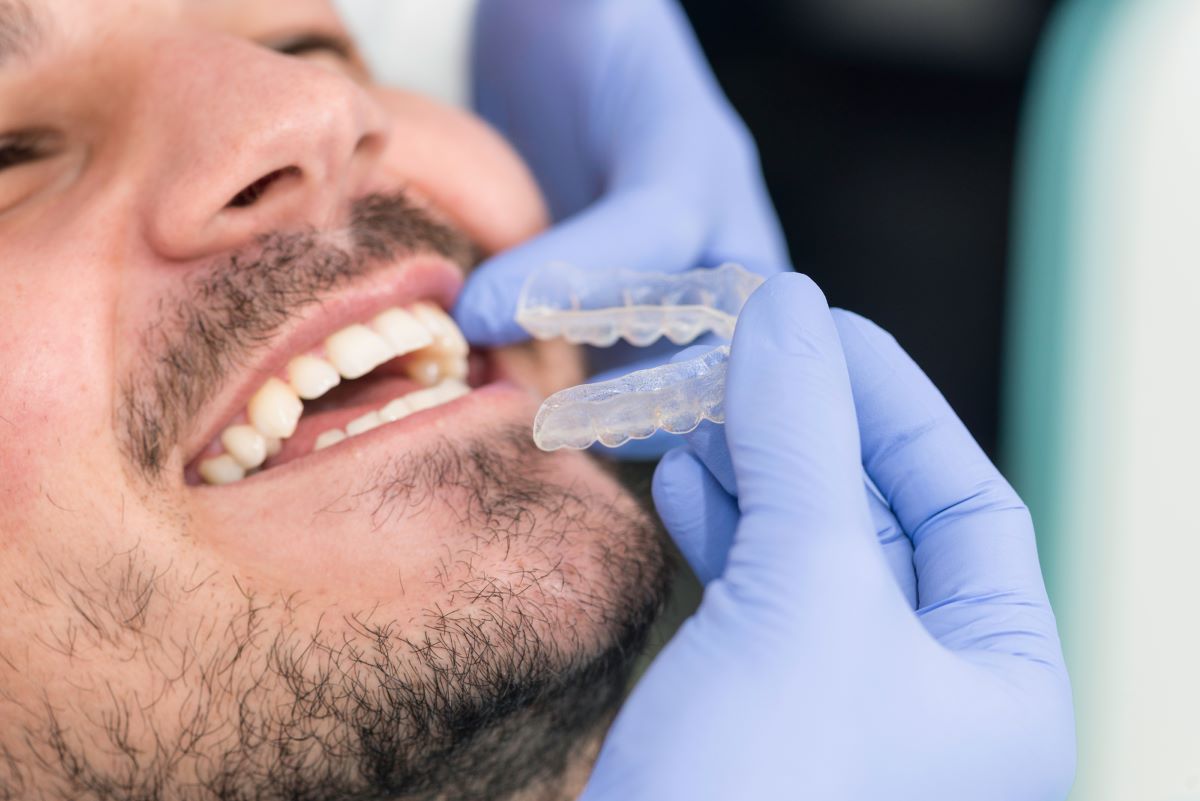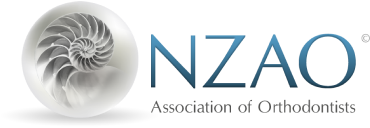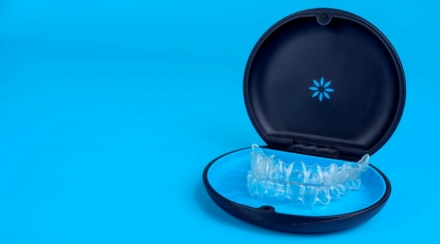In recent years, clear aligners have gained popularity among orthodontic patients worldwide, offering a more discreet and convenient alternative to braces. In this article, we will explore the effectiveness of clear aligners like Invisalign in straightening teeth for Kiwis. As more New Zealanders consider clear aligners as a teeth-straightening solution, questions around clear aligners cost, effectiveness, and how they compare to traditional braces continue to grow.
We will discuss the benefits of clear aligners, compare them to traditional braces, address common concerns, and provide insights into the treatment process. Our comprehensive look at the various facets of clear aligners in New Zealand will help you make an informed decision.
The main appeal of clear aligners lies in their aesthetics. Unlike traditional braces, which involve brackets and wires, clear aligners are virtually invisible when worn, allowing patients to undergo treatment with minimal impact on their appearance.
Clear Aligners: A Revolutionary Treatment Method
Clear aligners, such as Invisalign (Read Our Ultimate Guide to Invisalign Clear Aligners here), have revolutionised the field of orthodontics with their innovative approach to teeth straightening. Made from a clear, removable plastic material, these aligners are custom-tailored, and 3D printed to fit accurately over the teeth.
The original technique of moving teeth using plastic retainers is referred to as a Kesling Set-up and has been widely used since the 1970s. This technique was modified with the use of computer-aided design and manufacturing and has been around since 2003 with the first company that commercialised this technique being Invisalign. There are numerous companies worldwide that provide aligner products. Some are:
- Invisalign
- Spark
- Clarity
- SureSmile
- Angel
- uLab
Benefits of Clear Aligners
Aesthetics
One of the key advantages of clear aligners is their superior aesthetic appeal.
Unlike traditional braces, clear aligners are discreet and almost invisible when worn.
This makes them an ideal choice for individuals who prefer a more subtle orthodontic solution.
Comfort
Clear aligners are made from a smooth, BPA-free plastic material, offering a comfortable and mostly irritation-free orthodontic experience. Unlike traditional braces, which can cause discomfort and irritation to the soft tissues of the mouth, clear aligners have a smooth surface, fitting snugly over the teeth that minimises the risk of any discomfort or abrasions to the cheeks and soft tissues.
The aligners are custom-made to fit the patient’s teeth precisely, ensuring a snug and comfortable fit throughout the treatment journey.

Convenience
One of the biggest advantages of clear aligners is their removability. Unlike traditional braces, which are fixed to the teeth for the duration of the treatment, clear aligners can be easily removed when necessary.
This allows for greater flexibility in terms of eating, brushing, and flossing, as there are no brackets or wires to navigate around. Patients can enjoy their favourite foods without any restrictions and maintain a high standard of oral hygiene with ease.
Comparing Clear Aligners to Traditional Braces
While clear aligners offer numerous advantages, it is important to consider the potential limitations and compare them to traditional braces. Traditional braces consist of metal or ceramic brackets that are bonded to the teeth and connected by wires and elastics. They provide precise control and allow for targeted adjustments, making them highly versatile in achieving optimal results.
One of the primary advantages of traditional braces is their ability to handle even the most complex orthodontic movements. They are particularly suitable for cases that require significant teeth, root movement or jaw alignment. Clear braces, also known as ceramic braces, function similarly to traditional braces but use tooth-coloured or clear brackets and wires, making them less noticeable.
However, clear aligners have their own set of advantages. They offer greater comfort, improved aesthetics, and the convenience of being removable.
Clear aligners also allow for better oral hygiene as they can be easily removed for brushing and flossing.
Clear aligners provide a more discreet and convenient alternative to traditional braces. They offer the same level of effectiveness in treating some orthodontic issues but have some limitations when moving teeth roots or aligning the bite. They do have the added benefits of aesthetics, comfort, and convenience. Clear aligners are virtually invisible when worn, making them a popular choice among individuals who value their appearance during treatment.
How Much Do Clear Aligners Cost?
One of the most frequent questions about clear aligners patients ask is how much they cost. The price of clear aligners in New Zealand varies depending on several factors, including treatment complexity, brand choice, and orthodontic supervision.
Average Cost of Clear Aligners
- Mild cases: $3,500 to $6,000
- Moderate cases: $6,000 to $9,000
- Severe cases: $9,000+
Factors That Affect Clear Aligners Cost
- Severity of Misalignment: More complex cases requiring longer treatment times increase the overall cost.
- Brand Selection: Invisalign, as a premium gold standard brand, is often priced higher than other brands and generic DIY (direct to consumer) aligners.
- Treatment Supervision: Orthodontist-led treatments ensure precision and safety, which means they are priced differently than DIY aligners.
- Payment Plans and Insurance: Many providers offer flexible payment plans, and some insurance policies may cover part of the cost.
For an accurate quote, it is best to consult an orthodontist in your area who can assess your specific case and provide a detailed breakdown of the treatment and the costs.
Find your local Orthodontist using our search tool here.
Addressing Common Questions
Are Clear Aligners Effective for Complex Cases?
Clear aligners have come a long way in terms of technology and can now effectively treat a wide range of orthodontic issues, including some complex cases. While braces were historically used for complex cases, clear aligners like Invisalign have advanced significantly and can handle challenging tooth movements and jaw alignments. It is important to consult with an orthodontist to determine if clear aligners are suitable for your specific case.
Are Clear Aligners as Effective as Traditional Braces?
Clear aligners can be as effective as traditional braces in achieving straighter teeth and proper alignment for some cases. However, it is important to note that the effectiveness of clear aligners may depend on individual factors such as the severity of the case and the patient’s compliance with wearing the aligners for the recommended duration each day.
Regular check-ins and communication with the orthodontist are crucial to ensure the treatment progresses as planned.
Can Clear Aligners Treat All Orthodontic Issues?
Clear aligners can address a wide range of orthodontic issues, but they may not be suitable for every case. Complex cases that require significant teeth movement or jaw alignment may require the use of traditional braces or a combination of braces and clear aligners.
Are Clear Aligners Safe?
Clear aligners are considered safe when prescribed and monitored by a qualified specialist orthodontist registered with the Dental Council of New Zealand (DCNZ). Orthodontists have the necessary training and expertise to assess your orthodontic needs and create a personalised treatment plan.
DIY clear aligners or aligners obtained without professional supervision can be risky and may lead to unsatisfactory results or potential oral health issues.
It is always recommended to seek professional advice from an orthodontist for any teeth straightening treatment.
DIY Aligners vs Invisalign – What’s the Difference?
Many patients wonder about the differences between DIY aligners and Invisalign. While both options aim to straighten teeth, there are critical differences in treatment oversight, effectiveness, and safety.
| Feature | Invisalign | DIY Aligners |
| Material | SmartTrack plastic | Standard thermoplastics |
| Treatment Supervision | Orthodontist-monitored | No in-person monitoring |
| Cost | $6,000 to $10,000+ | $3,500 to $6,000 |
| Effectiveness | Suitable for mild to complex cases | Limited to mild cases |
| Safety | Professionally managed, reducing risks | Higher risk of misalignment or gum damage |
Which One Is Better?
There is no competition—Invisalign is the superior choice when compared to DIY aligners.
- Invisalign treatment is supervised by trained orthodontists, ensuring precise tooth movement, proper bite alignment, and long-term stability. DIY aligners, on the other hand, rely on self-impressions and online consultations, which increases the risk of incorrect movements, gum recession, and tooth damage.
- Invisalign uses advanced SmartTrack material and AI-driven technology to ensure predictable, effective results. DIY aligners often use cheaper plastics, leading to less control over tooth movement.
- Severe misalignment, bite issues, and complex cases cannot be treated with DIY aligners. Invisalign, however, can correct a wider range of orthodontic problems under professional supervision.
For Kiwi patients considering clear aligners, choosing an orthodontist-led Invisalign treatment is the safest and most effective option.
There continue to be new brands of aligner companies entering the market which may be the preferred brand used by your orthodontist. These brands are mentioned above such as Angel, Spark, Clarity, SureSmile and uLab.
DIY Aligners and the Importance of Professional Orthodontic Care
While the availability of DIY clear aligner companies may seem enticing due to their lower cost, it’s important to prioritise professional orthodontic care.
DIY clear aligners may pose risks to oral health, as they are not diagnosed or monitored by orthodontists. Without professional supervision, patients may experience complications such as loose teeth, bleeding gums, and difficulty accessing appropriate guidance and support.
By seeking treatment from a qualified orthodontist, you can ensure that your teeth straightening journey is safe, effective, and tailored to your individual needs. Orthodontists can provide personalised treatment plans, closely monitor your progress, and address any concerns or complications that may arise during treatment.
Orthodontists have significantly more training and expertise in teeth straightening than dentists, making them the best professionals to consult for personalised advice and comprehensive treatment.
Interested in finding out more? Find your local Orthodontist for expert advice by using our search tool here.
Effectiveness of Clear Aligners
Clear aligners can be effective in treating a wide range of orthodontic issues. They can address common problems such as crooked teeth, overbite, underbite, crossbite, gaps between teeth, and crowded teeth. However, it is important to note that the effectiveness of clear aligners may vary depending on the severity and complexity of each individual case.
Clear aligners work by applying gradual pressure to move the teeth into their desired positions. Through advanced computer simulations and 3D imaging technology, orthodontists can create a customised treatment plan that maps out the movement of the teeth throughout the treatment journey.

This level of precision and control ensures that the teeth align in the desired positions, resulting in a straighter and more aligned smile.
Aligners such as Invisalign are well-suited to the following issues:
- Mild to Moderate Crowding: aligners can effectively treat cases of mild to moderate crowding, where teeth are too close together or overlapping.
- Spacing: If you have gaps or spaces between your teeth, aligners can help close these spaces and create a more uniform smile.
- Overbites: aligners can be used to correct overbites, where the upper front teeth overlap the lower front teeth excessively.
- Underbites: For cases of underbites, where the lower front teeth are positioned in front of the upper front teeth, aligners can provide a solution.
- Crossbites: Aligners are suitable for addressing crossbites, where some of the upper teeth sit inside the lower teeth when biting.
- Open Bites: In cases where the upper and lower teeth don’t meet when the mouth is closed (open bite), aligners can help align the teeth properly.
- Rotated Teeth: Aligners can rotate teeth into their correct positions over time.
- Bite Irregularities: It can also address various bite irregularities and alignment issues to improve overall oral health and function.
Limitations of Clear Aligners
While clear aligners have numerous benefits, they may not be suitable for everyone or every orthodontic case. It’s important to consult with an orthodontist to determine the most appropriate treatment option for your specific needs. Some of the limitations of clear aligners include:
- Tooth Shape and Position: Teeth that are short, round, pegged, or severely tipped, may not allow the aligner to grip properly, hindering the desired tooth movement.
- Large Gaps Between Teeth: Clear aligners can reliably close up to 6mm of space per arch (top or bottom teeth). If the gaps exceed this limit, alternative treatment options may be more suitable.
- Intrusion and Extrusion: Clear aligners have limited capabilities in raising or lowering the position of teeth in the jawbone, and braces may be recommended over clear aligners.
- Midline Movements: Clear aligners can correct minor midline discrepancies (the imaginary line down the middle of the face) by up to 2mm per arch. However, larger midline movements may require the use of braces for optimal results.
- Root movement: There are limitations to the accuracy of root movements that aligners can carry out
- Poor compliance of patients and non-wear of aligners: This will lead to compromised planned movement and teeth will fail to move according to the predetermined treatment plan.
Are Clear Aligners Worth It?
When considering clear aligners in New Zealand, many patients ask whether the investment is worth it. While clear aligners may cost more upfront than traditional braces, their long-term benefits often justify the expense.
Why More People Are Choosing Clear Aligners:
- Discreet treatment: Virtually invisible compared to metal braces.
- Comfortable and removable: No irritation from brackets or wires.
- Easier oral hygiene: Can be removed for brushing and flossing.
- Customised precision: Designed using advanced 3D scanning and AI-driven technology.
While clear aligners like Invisalign are a financial commitment, they provide aesthetic, functional, and long-term advantages that make them a popular choice for both adults and teens.
Clear Aligner Treatment With An Orthodontist: A Smart Choice for Kiwis
Clear aligners have revolutionised the field of orthodontics, offering a more discreet and convenient alternative to traditional braces. They provide numerous benefits, including aesthetics, comfort, convenience, and effectiveness in treating various orthodontic issues.
However, clear aligners have their limitations and may not be suitable for all cases. Professional orthodontic care is essential to ensure the safety and effectiveness of teeth straightening treatment.
If you are considering clear aligners for teeth straightening, consult with an orthodontist who can assess your specific needs and recommend the most appropriate treatment option. With the guidance of a professional, you can achieve the straighter smile you desire and enjoy long-term oral health benefits.
Remember, your smile is a reflection of your confidence, and investing in professional orthodontic care will help you achieve the best possible outcome for your oral health and overall well-being.
Disclaimer: The information provided in this article is for educational purposes only and does not substitute professional advice. Please consult with a qualified orthodontist for personalised recommendations and treatment options.




